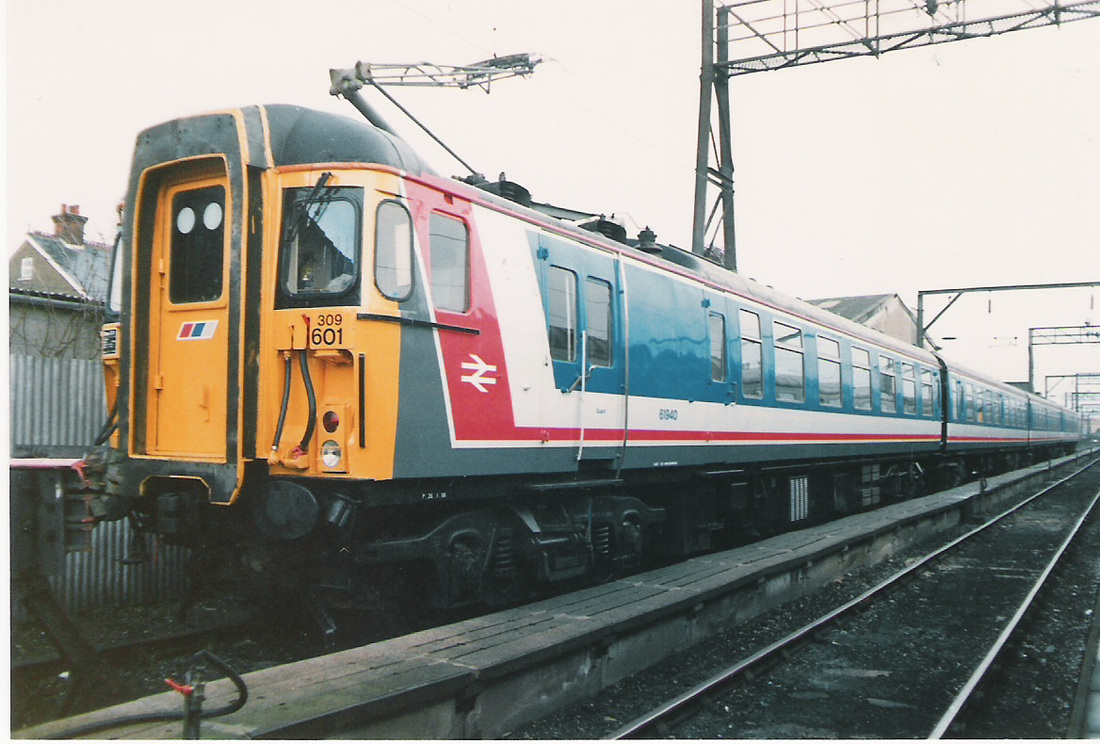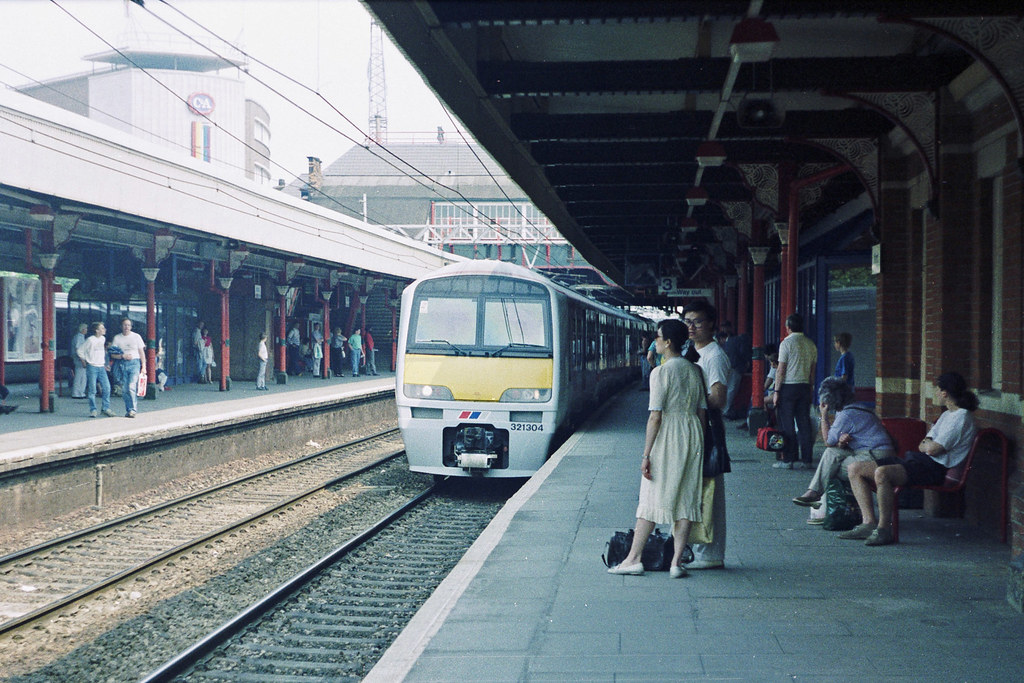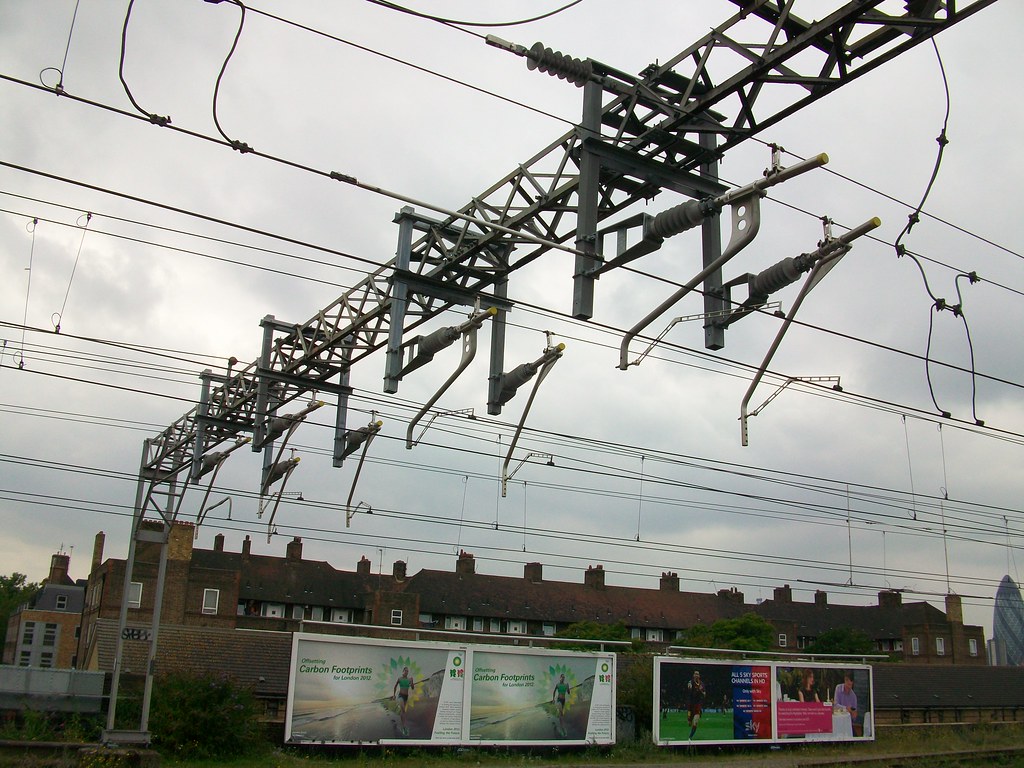If there was a need to run very high power traction to haul heavy trains through a mountain area, and we had all energy from hydro projects, it would be easy to provide the infrastructurenecessary for them to operate.
And the tension is quite high which means that standing waves are of lower amplitude and of shorter wavelength. Simple catenary haas been the standard in the UK since the '60s. The lines converted from 1500VDC, e.g. GEML, had compound catenary OLE as it was thought to dampen pantograph oscillations, which at the time of introduction were much heavier diamond pattern types. The additional wire in compound also helped to reduce voltage losses. The last compound wiring was removed a few years ago when the GEML OLE was refurbished with F&F parts, similar to those used on the GWML.
Here is a picture of Ilford station, probably in the '90s when 25kV had been in use for over 30 years. Note the compound catenary:
and here is a more recent picture showing the updated OLE with the F&F registration parts installed somewhere near BOW by the looks of it:
Despite this picture showing the transition from one length of catenary to the next giving eight sets for four tracks, each catenary is of simple type and has a minimal HV footprint.





